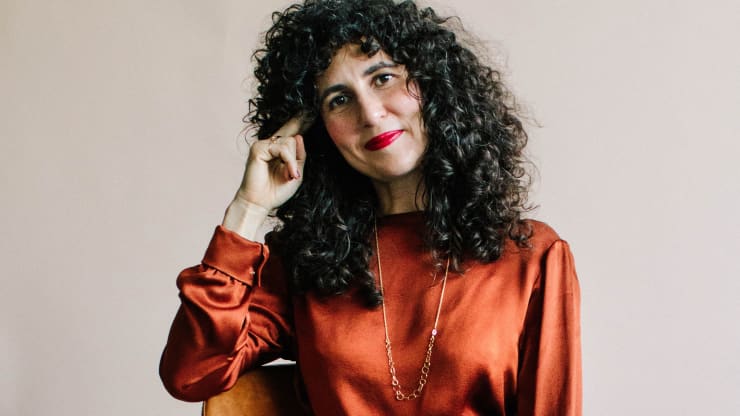The past few months certainly haven’t been easy for small businesses.
Many had to shut their doors due to the coronavirus pandemic. While some may never reopen, others are ramping up their business — and hoping they don’t have to shut down again.
Retail and wholesale bakery Ovenly had to temporarily shutter its operations for seven weeks when the crisis hit, laying off its entire staff of 66 employees. Agatha Kulaga, co-founder and CEO, called it “survival mode.”
Since that time, the New-York based business has been slowly reopening its bakeshops and has rehired eight full-time and 18 part-time workers.
Kulaga’s main focus now is staying as lean and as efficient as possible.
“We have revamped our retail strategy to innovate in-store sales by including contactless transactions and to-go windows to address public safety concerns,” she said.
Being able to adapt and pivot has helped many small businesses ride out the pandemic. Yet the worry is still there.
About 70% of small businesses are concerned about financial hardships due to prolonged closures and 58% worry about having to permanently close, according to the July MetLife and U.S. Chamber of Commerce Small Business Coronavirus Impact Poll.
The fear is not unfounded. An April survey by Main Street America found that about 7.5 million businesses are at risk of folding for good if the pandemic continues. Four months later, coronavirus cases remain high.
Finding new opportunities

Kulaga first spoke about her challenges during a live roundtable discussion streamed on both CNBC’s and Glamour’s Facebook pages in May, hosted by Glamour Magazine editor-in-chief Samantha Barry. CNBC reporter Kate Rogers joined in, as well as Shyla Sheppard, founder and CEO of Bow & Arrow Brewing Co., and Erin Patinkin, co-founder and CEO of Seemore Meats & Veggies.
Three months later, all three entrepreneurs are still in business, working hard to remain successful and find new ways to bring in revenue.
For Sheppard, of Bow & Arrow Brewing Co. in Albuquerque, New Mexico, it was “really critical” to pivot her business when the pandemic began.
Pre-Covid 19, the majority of Bow & Arrow Brewing Co.’s revenue came from customers visiting its taproom. At first it could only provide to-go products but has since opened up its outdoor patio at 50% capacity, per public health restrictions.You have to be flexible and not allow uncertainty to paralyze decision-making.Shyla SheppardBOW & ARROW BREWING CO. FOUNDER AND CEO
The company has also purchased a canning line, which she announced during the May roundtable.
Since then, Bow & Arrow Brewing Co. has commissioned the new line, designed labels and released its first two brands of canned beer.
“They sold out faster than expected, so now we are working hard to keep up with the new demand for our canned products,” Sheppard said.
“It’s very exciting and such a difference between the beginning of Covid restrictions, when we were challenged with ‘how do we move more beer so it doesn’t sit and go stale?’ to now when we are beginning to brew more beer than we ever have.”
Making up for lost funding

For Erin Patinkin, the impact of the virus on the stock market in March led to the loss of $1.25 million in Series A funding she was expecting to get for Seemore Meats & Veggies, which only officially launched in February.
“I was really anxiety-ridden and really stressed but my only thought was, ‘I have to make a strategy to move forward,’” Patinkin said.
She quickly turned to fundraising and raised some cash. As the market recovered, the Brooklyn, New York-based company was able to get a few more checks. Ultimately, it recovered 80% of the initial amount it was expecting.
The company, which initially began in 199 Whole Foods stores, has gained another 64 clients and has 20 more on deck.
“I feel very lucky that it just so happens that our company creates a product people are seeking out — healthy, clean-ingredient sausages that are convenient and have a long shelf-life,” Patinkin said.
Putting PPP to use
All three women applied for and received the federal Paycheck Protection Program loans through the Small Business Administration.
The PPP was created as part of the CARES Act, aimed at helping businesses survive the crisis. Initially, the loan was forgivable if at least 75% of the money went to payroll for eight weeks after the loan was signed. The program has since been adjusted to give business owners more time and flexibility.
The loans are now forgivable if at least 60% is spent on payroll expenses and has extended the covered period for loan forgiveness to 24 weeks after the disbursement date.
Patinkin used the funds for payroll, benefits, and office rent. “It was not a substantial amount, so we used it pretty quickly,” she said.
Ovenly’s Kulaga has used about 40% of her PPP loan for the few things the guidelines allow, like labor, rent and utilities.
When she first took the loan, she was “incredibly stressed” about the financial burden. She had decided to put the money away and use it slowly, as needed, without feeling the pressure of having to use it for payroll when she wasn’t rehiring back 66 employees. Now she has until the end of October to get to those staffing levels.
“This will still be challenging, but the previous forgiveness terms were actually impossible to achieve for most small business owners,” she said.
Sheppard has also used her PPP loan to help supplement payroll, utilities and rent.
“Since the roundtable, we were fortunate the SBA lengthened the timeframe for use and loosened the percentage required for payroll use, so that has helped us to stretch out the runway further.”
Lessons learned
One of the biggest takeaways from the experience is the need to be nimble, all three women said.
“There have been so many twists and turns in the last few months and my team and I have been rolling with them and recalibrating and recrafting strategy when it’s needed, while also keeping calm,” Patinkin said.
It’s also a reminder that while nothing is certain, you have to be 100% invested in your business, Kulaga said.
“A healthy company requires a healthy leader,” she said. “In this case, it highlighted the utter importance of attending to my own mental health needs during a time of extreme stress and isolation while I was in survival mode.”
The crisis also reinforced the importance of knowing your finances, setting aside savings regularly and maintaining strong banking relationships, Kulaga added.
For Sheppard, she learned that technology is key to expanding her brewery’s reach and for streamlining purchases for customers. Also, she didn’t let fear stop her from making important choices for the business.
“You have to be flexible and not allow uncertainty to paralyze decision-making,” she said.
The post How these small businesses are surviving during the coronavirus pandemic appeared first on CNBC News and is written by Michelle Fox
Original source: CNBC News






